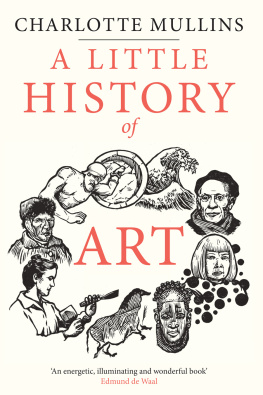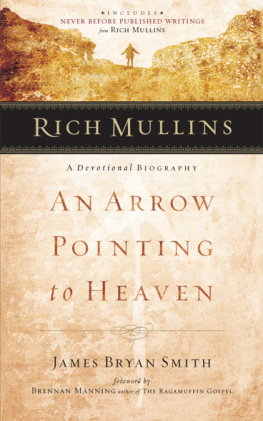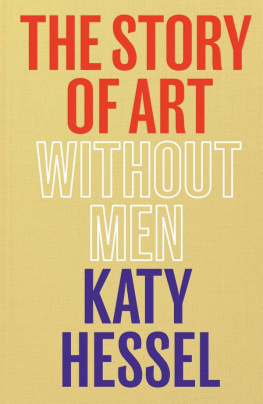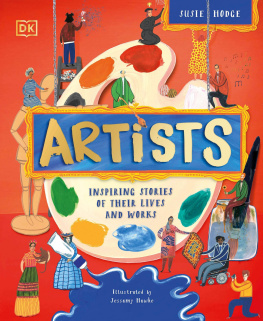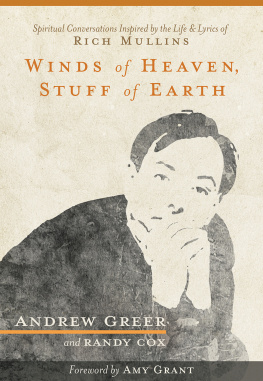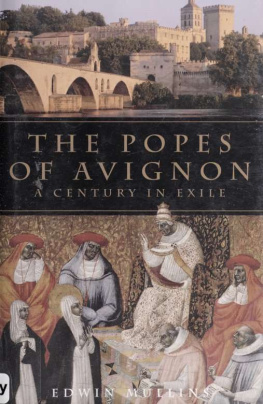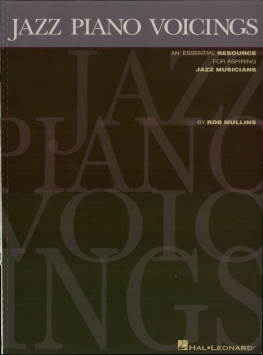A LITTLE HISTORY OF ART

Copyright 2022 Charlotte Mullins
All rights reserved. This book may not be reproduced in whole or in part, in any form (beyond that copying permitted by Sections 107 and 108 of the U.S. Copyright Law and except by reviewers for the public press) without written permission from the publishers.
For information about this and other Yale University Press publications, please contact:
U.S. Office:
Europe Office:
Set in Minion Pro by IDSUK (DataConnection) Ltd
Printed in Slovenia by DZS-Grafik d.o.o.
Library of Congress Control Number: 2021946783
e-ISBN 978-0-300-26553-8
A catalogue record for this book is available from the British Library.
10 9 8 7 6 5 4 3 2 1
Contents
CHAPTER 1

First Marks
I t is 17,000 years ago. Two people climb through a narrow hole and pull themselves up into a long winding passageway deep within a cave system in southern France. A river churns beneath them, pushing its insistent way through the rock. It is charcoal-black in the passage and no sounds from the outside world reach them. The adult holds a flaming torch and its smoky flame throws out fingers of light. The teenager follows behind, glancing at the engravings of bison and reindeer carved into the walls. At times they have to crawl on all fours as the cave walls close in or pick their way around skeletons of long-extinct cave bears, their canine teeth wrenched out by previous visitors to become pendants and necklaces.
Together the pair head to the furthest point in the cave system, over half a kilometre from the entrance. There, balancing on their heels so their feet dont get stuck in the mud, they squat down and cut a heavy slab of clay from the damp cave floor using a sharp piece of rock they have brought along for this purpose. Their feet sink further in as they lift the slab and carry it across to a rocky outcrop and set to work. Slowly the soft clay is transformed into two bison, each the length of an adult arm. The bison follow the contours of the rock but stand proud of the surface, the male rearing up behind the female.
The creators stand and hold the torch high. The bison seem to come to life, their manes standing up on their necks, their distinctive humped backs and tails twitching in the flickering flame.
*
Were these sculptures made as part of a fertility ritual, to celebrate the magical creation of life? Or was the teenager taken deep into the cave system as part of a coming of age ceremony, a rite of passage on the journey to adulthood? We can only guess. The two bison at Tuc dAudoubert in France are from the Palaeolithic age. They are prehistoric, made before written records began, long before writing was even invented. They are the worlds earliest known relief sculptures (the sculptures remain attached to the background but project away from it). Archaeologists and palaeontologists can figure out how, and by whom, the bison were created using clues left in the cave heel marks preserved in the mud and finger strokes imprinted on the sculptures. It is incredible to see these marks they make it seem as if the bison were sculpted only moments ago, that the artists who left their fingerprints in the clay have just stepped away. But what we cannot be sure of is why the sculptures were made. What did art like this mean to our ancestors, and what does their art mean for us today? Did they even consider what they did art at all?
Throughout this book we will look at a vast and diverse array of material from around the world, all of which is considered art today. But just what do we mean by art? Art is a slippery term. Its meaning and value changes over time, but ultimately it is created to express something that goes beyond words. The contemporary painter Ali Banisadr says that all art, from cave art onwards, is about magic. The cave artists, he says, were trying to tap into magic, to put something in a visual language that we cant really understand. Its always been about magic. What does this mean? Banisadr is not talking about Abracadabra! magic, about pulling rabbits from hats, but of a mysterious force, an unexplainable power. This kind of magic can transform an object or set of marks on a wall and give it the ability to communicate powerful ideas far beyond the reach of spoken language. Sometimes these ideas are expressed rapidly or with breathtaking complexity. Artists tap into this magic to transform the simplest of marks or everyday materials charcoal, stone, paper, paint into works of art.

Two sculpted bison in the Tuc dAudoubert cave in France, around 17,000 years old
When artists sculpt an animal or paint a figure they are not necessarily trying to create a likeness, but they are trying to express something important about that animal or that figure. This is why art no matter how diverse it appears on the outside ultimately shares a common thread. Artists throughout history (and prehistory) have always searched for the best means of expression for their ideas. This is arts own magic, the element that allows it to connect with us, to move us emotionally even if sometimes we cannot explain why. Art can help us see the world differently or understand our place in it a little more clearly. It is powerful stuff.
In this book we will journey from some of the oldest sites of art to the present day to explore how art and artists have shaped and influenced our world. There is not one clear path through history for us to follow, despite previous accounts suggesting there is. Instead we will walk together exploring how multiple paths interconnect as we journey through time. We will meet artists who are anonymous today, like the two who sculpted the bison all those millennia ago, and we will meet those who were praised during their lifetimes but whose careers have been overlooked ever since. There will be artists who are still household names and those who, despite their talents, are largely unknown. We will roam the world together, reinstating forgotten artists and expanding the traditional view of art history.
Our journey begins, incredible as it sounds, 100,000 years ago, when modern humans first made paint by grinding red ochre stones and combining the dust (pigment) with the fatty juice from burnt bones. Conch shells containing 100,000-year-old paint have been found in Blombos Cave in South Africa. No art has been found that dates this far back, and the paint prepared in the shells may have been used for body adornment or burials. But the ability to make paint, and therefore to alter the world purposefully and creatively, existed.
By the time modern humans started to migrate from Africa to Europe and Asia around 60,000 years ago they had begun to use paint to make decorative marks on objects and walls. Decoration can make surfaces more appealing but there is no deeper message. Dots or crosses on a pot are not trying to tell us anything about what it is to be alive, to be a human. We need art for this. No prehistoric wall painting has so far been found in Africa, but the similarities between later Indonesian and European examples suggest a shared way of thinking that had its origins in Africa before our mass migration began. Tantalisingly this remains a theory for now.
Some of the earliest known marks are clusters of red dots and handprints found on cave walls alongside paintings of animals. Red ochre paint was blown over a hand using the hollow bone of a bird to leave a stencilled copy in place. In Chauvet Cave in France one prehistoric person had a crooked little finger and their distinctive handprint recurs throughout the cave system. In Borneo early handprints exist in a remote cave system in East Kalimantan and in Sulawesi they appear on the limestone walls of Leang Timpuseng. These sets of handprints, all made around 35,000 years ago, are thousands of kilometres apart but have the same message: I was here, this is my mark. These handprints are not art they are more like signatures, perhaps made by those trusted to paint the animals. The earliest depictions of animals are the first works of art. Now our journey can really get going.
Next page
